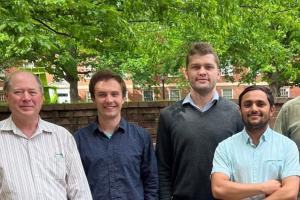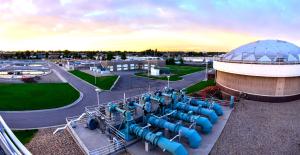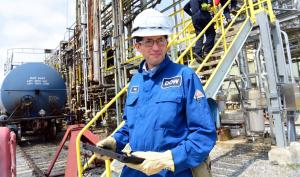
Reactivity
Led by Professor Robert Davis, The Davis Laboratory is a research group at the University of Virginia interested in developing new or improved catalytic materials by studying how the structure of a catalyst affects its performance in a chemical reaction.
Introduction
Heterogeneous catalysts prepared in our laboratory are often composed of small metal particles supported on an oxide carrier. Since the metal particles expose a significant fraction of their atoms to the surface, the interface between the underlying support and the particle is expected to contribute to the overall rate and selectivity of a catalytic reaction.
A wide variety of analytical techniques are used to examine the metal particles and metal-support interface. These include adsorption of simple gases, temperature programmed desorption, transmission electron microscopy, FT-IR spectroscopy, laser Raman spectroscopy, UV-vis spectroscopy, and x-ray diffraction. Additionally, x-ray absorption spectroscopy using synchrotron radiation is an important tool for examining catalysts. Analysis of the extended x-ray absorption fine structure (EXAFS) and the x-ray absorption near edge structure (XANES) provides information on the atomic and electronic structure of catalyst components.
Detailed kinetic studies of selected probe reactions are also carried out over catalysts in laboratory microreactors. The combination of physical and chemical methods allows for new relationships between catalyst structure and chemical reactivity to be discovered.
Recent News
Congratulations to Dr. Colby Whitcomb on his successful defense of his doctoral dissertation on June 27th!
Congratulations to Dr. Naomi Miyake on her successful defense of her doctoral dissertation on December 3rd!


